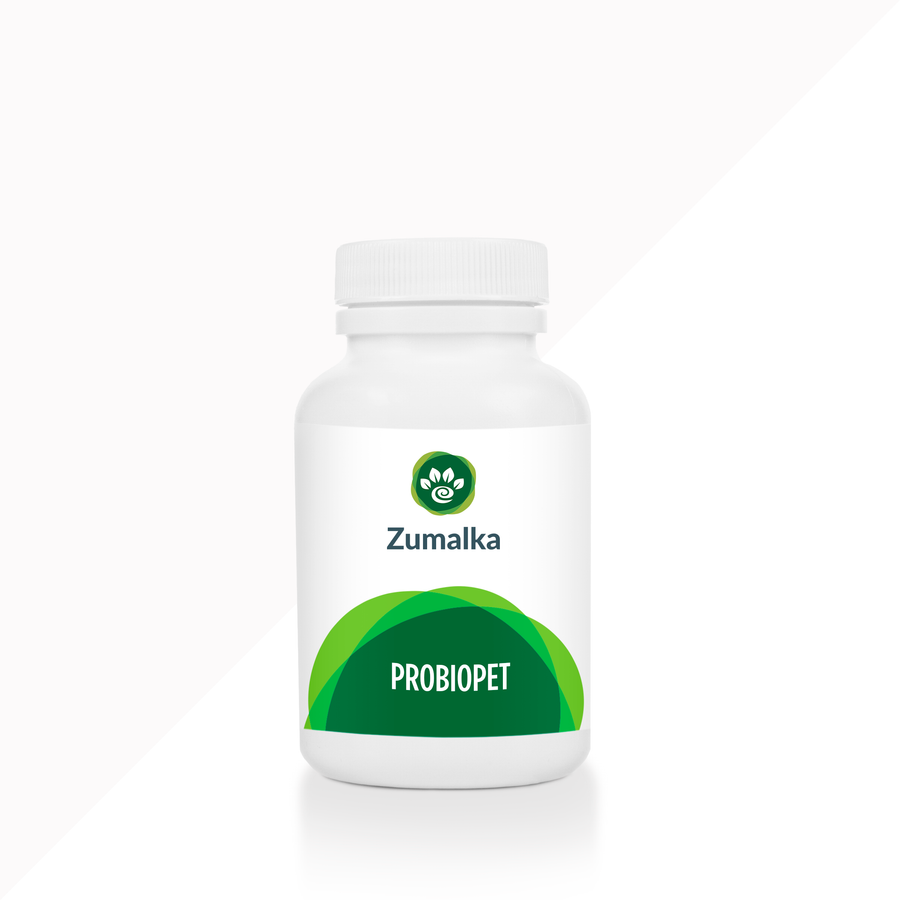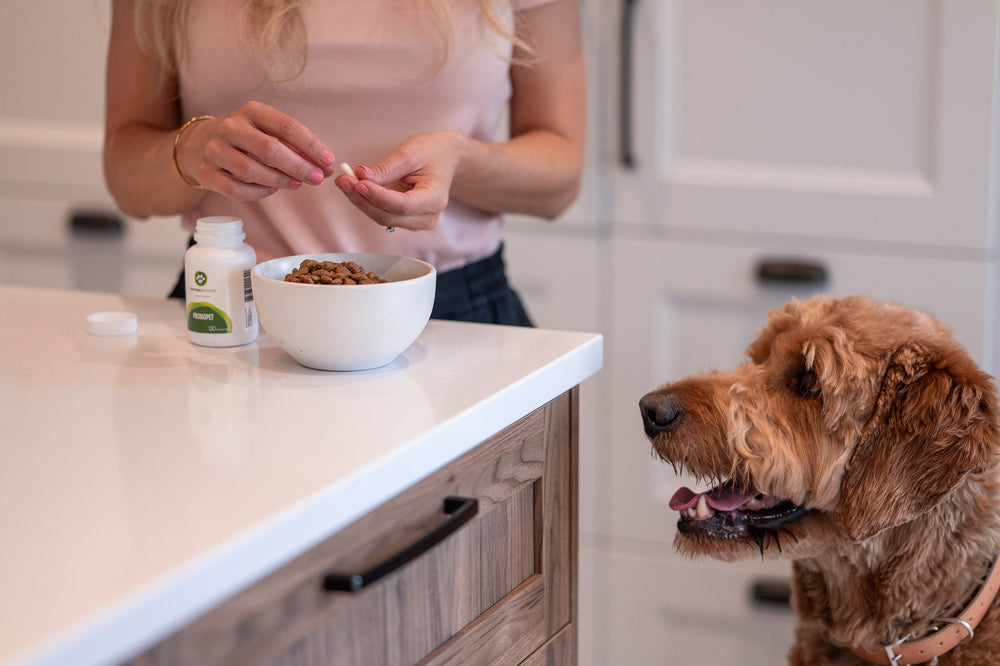Raw Food Diet for Pets: Benefits and Risks Explained
If you're like most pet parents, you want nothing but the best when it comes to your furry family member's nutrition. One popular option gaining traction is raw pet food. But is switching to a raw food diet really the smartest choice for your pet's health?
In this blog post, I’ll walk you through the key things you need to know about raw meat-based diets for dogs and cats. If you're thinking about transitioning your pet to raw food, read on to make informed choices that will support your furry friend’s overall wellness.
What Exactly is the Raw Food Diet?

At its simplest, a raw pet food diet—also known as the biologically appropriate raw food (BARF) diet—consists of uncooked animal products like muscle meat, bones, tendons, organ meats, raw eggs, along with fruits and vegetables.
The primary concept behind raw food diets is to provide dogs and cats with a regimen that mimics what they would naturally eat in the wild. In addition to offering a more nutritious alternative to commercial pet food, a raw diet also aims to eliminate toxins and other harmful substances from your pet's diet.
Many pet owners are choosing raw diets over commercial ones because it gives them full control over what they feed their pets. But what are the specific benefits of switching to a raw diet?
The Benefits of Raw Diets for Pets
As an animal homeopathy expert, I advocate for a more natural diet for pets that aligns with their physiological needs. In addition to offering complete and balanced nutrition for dogs and cats, raw foods provide several key potential benefits, including:
- Supporters of raw diets argue that these meals provide a more satisfying experience for pets. This is largely due to the natural ingredients and higher nutrient density compared to commercial pet food. Additionally, dogs and cats are able to enjoy a diet that more closely resembles what they would naturally eat in the wild, offering a richer and more authentic taste experience.
- Pet parents who have already tried the raw dog food diet often report that their canine companions are more resilient against disease and illness. They attribute this improved immunity to the higher levels of vitamins, minerals, and other essential nutrients preserved in raw meals, which are typically diminished in processed or cooked foods.
- According to raw diet proponents, ingredients like muscle meat, organs, tendons, bones, and fresh fruits and vegetables are more filling due to their natural composition, unlike the fillers commonly found in store-bought pet food. In addition to providing all the essential vitamins, minerals, and nutrients your dog or cat needs, these natural foods help prevent overeating by keeping pets satisfied for longer periods. This not only makes their weight easier to manage but also supports higher energy levels.
- Unlike cooked food, raw diets often include bones and gristle that naturally help remove food debris from gums and teeth, reducing the risk of plaque and tartar buildup. This helps prevent dental health issues such as gum disease and tooth decay. Additionally, the smell of fresh meat, fruits, and vegetables is more appealing to pets, making mealtime more enjoyable for them.
- Pet owners who have transitioned to raw food emphasize that their pets have healthier skin and shinier coats. This improvement is largely due to the abundant amounts of protein, vitamins, minerals, and essential fatty acids found in raw meat, fruits, and vegetables, which nourish the skin and promote a glossy coat. Additionally, some commercial cat or dog foods may contain fillers or artificial additives that can trigger itching and bald patches in pets.
- Compared to store-bought kibble or cat food, raw foods contain no preservatives or unnecessary ingredients. This makes them easier for pets to digest and helps prevent bloating, nausea, and other gastrointestinal problems. It also results in smaller, less smelly poop—an added bonus for pet owners. Additionally, since raw food is free from common allergens like artificial additives and grains, it can help avert food allergies and sensitivities.
However, it is crucial to closely monitor your pet before, during, and after introducing them to a raw diet. This is to check for any irregularities, such as changes in digestion, energy levels, or behavior, that could affect their overall health and well-being. If you notice any issues, don't hesitate to consult your vet or a pet wellness expert to ensure your pet stays healthy.
Does a Raw Food Diet Come With Potential Risks?

Feeding your pet a raw dog food diet, or its feline equivalent, may provide more diverse protein sources. It also ensures your pet gets all the essential vitamins and minerals. However, raw feeding comes with potential risks. Before introducing raw cat food to your feline friend, it is important to be aware of the following risks:
Your pet may not like it.
Like most pets, your dog or cat likely has specific food preferences. While it's essential to provide a complete and balanced diet, there is a strong possibility that your pet may not enjoy raw meat or other components of a biologically appropriate raw food (BARF) diet, which includes raw meat, bones, and natural ingredients.
There is a high risk of bacterial contamination.
Feeding your pet raw dog food means you won't be able to eliminate pathogens due to the lack of cooking and processing. Harmful bacteria such as Salmonella spp., Staphylococcus aureus, Campylobacter, and Listeria monocytogenes can easily be present. These pathogens may lead to gastrointestinal issues, including food poisoning, abdominal pain, vomiting, and diarrhea.
Raw meaty bones can be choking hazards.
Bones are a common feature in raw meat-based diets, but they are absent from commercial cat or dog food for a good reason: they can cause serious injuries. These include choking, tooth fractures, and intestinal blockages. Small, sharp bones can also perforate the digestive system, leading to life-threatening complications if not treated immediately.
Parasites can be present in raw pet food.
Raw, fresh dog food—or its feline equivalent—can harbor various parasites, including Toxoplasma gondii, protozoa, tapeworms, Sarcocystis spp., nematodes, and Neospora caninum. In addition to causing gastrointestinal issues like vomiting and diarrhea, these parasites can migrate to other organs, potentially leading to serious complications such as liver or neurological damage.
Ideal nutritional requirements may not be reached.
Canines are facultative carnivores, meaning they primarily thrive on meat but can also derive nutrition from non-meat sources. They benefit from a high-protein diet that integrates raw muscle meat and organs, while still being able to utilize other sources of nutrition beyond animal products.
Felines are obligate carnivores, meaning they require raw meat in their diet to obtain essential nutrients like taurine, which are critical for their health. Without these nutrients, cats won't maintain optimal health. It's also important to carefully plan each meal to ensure your pet gets the full range of nutrients needed to stay happy and healthy.
8 Important Things To Remember When Giving Your Pet a Raw Diet

Switching to a raw dog food diet (or its feline equivalent) requires patience, consistency, and determination to ensure a smooth transition and maintain your pet's overall wellness. Remember, the process will take time and effort. Without proper care, your pet could face digestive issues or other health complications during the transition.
#1. Consult your vet or pet wellness expert first.
Before introducing your pet to raw dog food, consult with your vet or pet wellness expert to assess whether they can handle a raw diet. While the biologically appropriate raw food (BARF) diet offers potential benefits, certain factors—such as age, health conditions, or digestive sensitivities—may prevent your pet from processing it properly.
Always remember that failing to consult a professional can result in serious health consequences for your pet. No matter how fresh your food ingredients are, they won't benefit your dog or cat if it has trouble processing or digesting them properly.
#2. Transition your pet to raw food diets slowly.
It’s important to ease your pet into a raw diet gradually. The transition should not be rushed. Start by adding small amounts of raw, fresh food to your pet's commercial meals each day, gradually increasing the portion until they are fully accustomed to it.
Just like humans don’t always enjoy new foods immediately, pets may also take time to adjust to a raw feeding regimen. In many cases, it takes a while to develop a taste for a new type of soup or pie. Similarly, when shifting your dog’s or cat’s diet to a raw one, it’s important to make the change gradually. A slow and steady approach is key.
#3. A complete and balanced diet is crucial.
Ensuring your pet gets all the essential vitamins, minerals, and nutrients is crucial, even when feeding raw food. With raw diets, it's important to have a meticulous feeding plan that consistently meets your pet's nutritional needs, including key nutrients like taurine, calcium, and fatty acids.
When preparing your pet's raw meals, it's important to measure all ingredients carefully, including raw beef, chicken, pork, fruits, and vegetables, along with other components in your feeding plan. It’s crucial to note that freeze-dried food can harbor food-borne parasites if not cooked or handled properly.
#4. Always choose high-quality meats and organ meats.
Simply choosing fresh food is not enough when it comes to raw cat food (or its canine counterpart). You must also consider cleanliness and proper preparation to ensure food safety. Always check and assess the ingredients to ensure they meet high-quality standards and are handled with care.
Along with a thorough visual examination, a sniff test is also crucial. While some ground meat may look fine, it can have an unpleasant odor, indicating spoilage. Overlooking these steps can prevent you from providing a balanced diet for your pet.
#5. Proper handling and preparation are extremely important.
In essence, raw diets are essentially homemade diets. It's up to cat and dog owners to carefully balance the right amounts of meats, organs, tendons, and even bones to ensure their pets receive all the essential vitamins and minerals they need.
Properly cleaning, handling, and preparing raw dog food (or its feline equivalent) is crucial. If you skip this step, both your pet and your entire household could be exposed to dangerous pathogens. Additionally, it’s important to note that "fresh dog food" doesn’t necessarily mean it’s safe to serve raw, as it could still harbor harmful pathogens unless specifically prepared for raw consumption.
#6. Ensure safe storage for raw pet food.
It’s important to remember that, unlike most human food, raw pet food requires more careful storage. Be sure to store raw meats like beef, chicken, and pork in airtight bags or containers. Additionally, freezing them thoroughly is necessary to prevent bacteria and parasites.
Fresh fruits and vegetables don’t require the same intensive storage as meats. However, they should be kept in the chiller to avoid contact with flies and other insects that may carry parasites. Additionally, practice safe thawing methods for raw meats. Avoid leaving them out too long, as this can encourage the growth of pathogens like Salmonella.
#7. Monitor your pet closely for early signs of health issues.
Be sure to monitor any changes in your pet's health when switching to a raw food diet. Common issues include nausea, vomiting, constipation, bloating, or diarrhea. In some dogs or cats, you might also notice itching or unexpected sores.
It’s crucial to consult your vet or pet wellness expert if these symptoms occur to prevent more serious health problems that could harm your pet’s well-being.
#8. Safeguard your pet from harmful toxins for a healthier and happier life.
Regardless of your pet's diet, there is still a significant chance it will be exposed to environmental toxins that can trigger health issues. Helping to eliminate these toxins is essential to keeping your dog or cat happy and healthy.
Zumalka’s GENERAL DETOXIFICATION kit includes our KIDNEY DRAINER, LIVER DRAINER, LYMPH DRAINER, ENVIRONMENTAL DETOX, and PROBIOPET products. Together, they support the body’s natural detoxification processes and help maintain optimal organ function to strengthen your pet’s immune system.
Conclusion
As a pet owner, ensuring that your dog or cat meets all its nutritional requirements is a priority. While commercial pet food often provides the necessary nutrients, switching to a raw food diet can also be a viable option. I’d love to hear your questions and insights in the comments section. I look forward to having a meaningful conversation with you soon!







We have 2 large dogs, who have been eating raw since about 8-12 weeks, (they are both 3 1/2 years old…)Our vet is a unique individual who is very supportive of our use of a raw/barf diet. Our dogs; a lab and a bernese mtn. dog are robustly healthy and have great energy teeth are amazing and are friendly and well behaved.. If you cook at home for yourself, you’re qualified… just remember to give the dogs their own section of the fridge/freezer that way, there are no OOOps… Best regards…
Does feeding your dogs Raw meat does it have to be organic grass fed meat
Before going raw my dog ( Shepard/husky mix) he had skin allergies, loose stool and was over weight. Since feeding a mixture of home made and premade raw his health has improved greatly. Stool looks great, skin is good, no more stinky, oily fur,fur is shiny and he has loads of energy. He went from 36kg to 29.3 in 6 months. The vet was amazed at how clean his teeth were and his overall health ( and made sure I understood that raw was unsafe. Raw food cannot be prepared in the home safely. Funny how I cook my own family’s food from raw.) I’m amazed at how many people I’ve met that have been feeding raw for years. I’m just sad I didn’t hear about it when we had our previous dog who had so many allergies and problems.
Knowing what I now know about commercial food vs Raw , I would never ever use commercial food unless it was wheat free. My dogs eat raw Turkey necks ground up and raw veg (green with a bit of purée garlic ) and sometimes carrot with ginger for the stomach. My beagles whit on them is very whit , their teeth are plaque free and they thrive on their food. I a
Los will add flax oil , kelp and white willow at times Plus I put Coildial silver inthe water
I have a four month puppy and we’ve tried qa couple of hard dog foods and she is either not eating much or having diarrhea I would like to know if a raw food diet hurt her if we started it right away. The vet says says she is healthy and she has all her needles
“lady’s”. Mum. Margo
Leave a comment